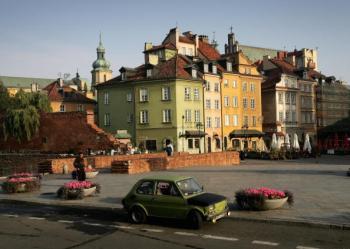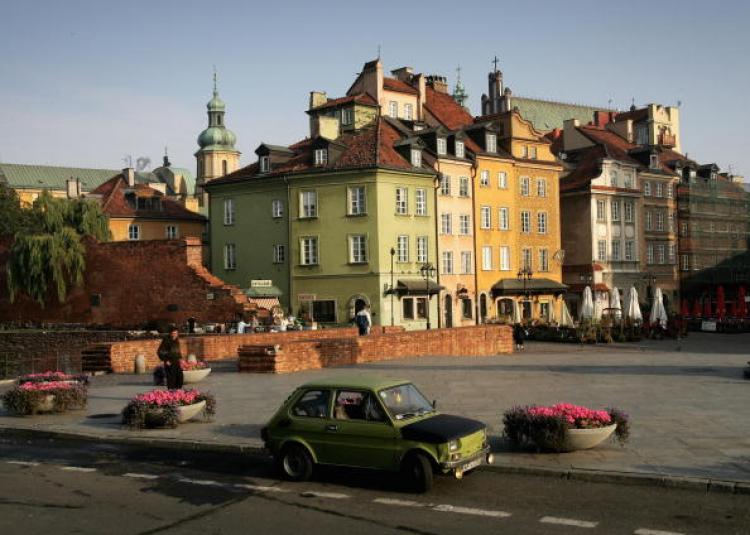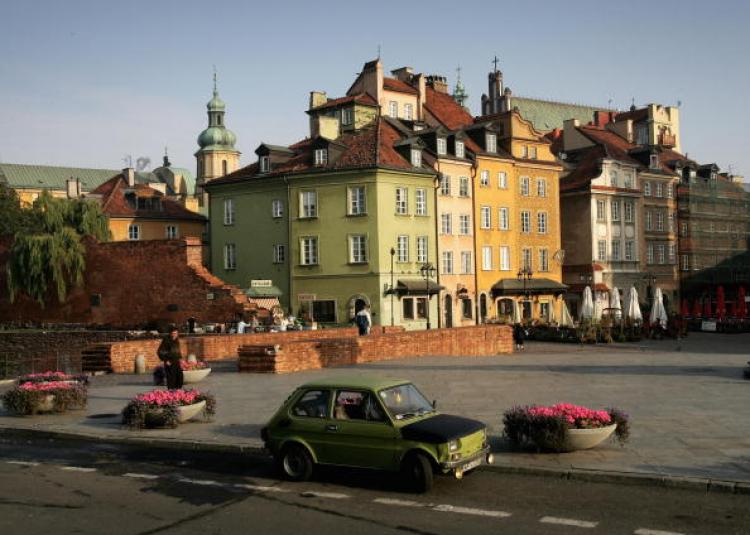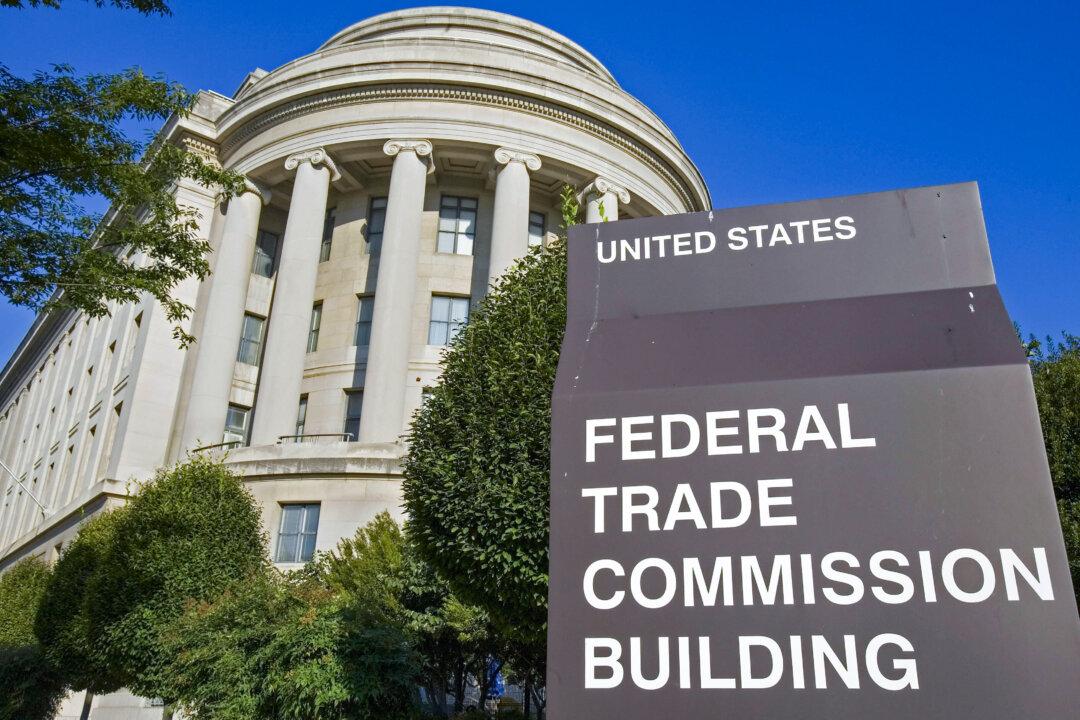WARSAW, Poland—As many of the world’s economies are buttressing themselves with signs of solid recovery from the global financial meltdown of ’09, analysts are taking stock of the damage and business journals are compiling who’s-who lists of star survivors and sore losers.
Poland has certainly gotten itself on the register—in a good way, let me be quick to add. Poland stands alone as the only country in Europe to have sustained positive economic growth during the crisis while the rest of Europe was plagued by economic contraction. Analysts attribute such exceptional performance to a number of factors.
It’s surprising what benefits come from being a bit insular sometimes. Twenty-two years after Poland said goodbye to an unworkable, centrally planned system and embraced free-market economic normalcy, the country’s banking sector is still dragging its feet when it comes to adopting some of the banking practices and financial tools popular in highly developed economies. Specifically, the reluctance of Polish banking supervisors to allow such practices as mortgage-backed securities and subprime loans is widely being fingered as a factor that kept toxic assets at bay.
Another factor that kept the dirty backwash of financial contagion from flowing over the EU floodgates into Poland was a conservative approach to monetary policy in the years preceding the crisis. While this may have stifled growth, it ultimately proved a boon by giving Polish policymakers the much needed leeway to drop interest rates and stimulate lending while banks the world over were paranoid and afraid to lend. But even with this downward adjustment, interest rates remained high enough to keep foreign investor interest piqued.
The conservatism of Polish banks also acted as a bulwark by pushing Poland’s lending standards light-years away from such practices as the infamous NINJA loans of some U.S. banks—“No income, no job, no assets? No problem!” Thus, Poland’s balance sheets remained sound and the housing market didn’t get too frothy for comfort. Housing prices did stagnate, but there was no bubble, no pop, and no big clean up of ruptured gum on the collective face of homeowners was required.
Another shock absorber, also kind of attributable to trailing behind the region’s trailblazers (like Slovakia, which adopted the euro in 2009), was the fact that Poland hadn’t yet entered the eurozone. As capital started to fly away from Central Europe in search of safe havens in the form of more stable assets, like standard reserve currencies and gold, the Polish currency—the zloty—depreciated. While that certainly made imports more expensive and meant that the average Kowalski had to tighten his belt a notch or two, it was great for exports and tourism.
So insulated from external shocks, Poland was well positioned going into the crisis. However, this position may not have been enough in and of itself to keep the economy humming along in times of extreme economic distress, it also helped to have friends abroad.
Poland has supplanted Russia as Germany’s principal trading partner in the east. Not only are competitively priced Polish exports attractive to German buyers, but also Polish subcontractors play a vital role in Germany’s economy, to Poland’s obvious benefit.
Relatives abroad that sent $9 billion back home in 2010 certainly played a supportive role during the crisis and EU funds projected at $67 billion over the period 2007–2013, and earmarked for infrastructure upgrades, also helped Poland stay stable.
Part design and part serendipity, Poland’s economic performance is a well-deserved feather in the hat of Poles, who have certainly had their historical share of bad luck.
Poland has certainly gotten itself on the register—in a good way, let me be quick to add. Poland stands alone as the only country in Europe to have sustained positive economic growth during the crisis while the rest of Europe was plagued by economic contraction. Analysts attribute such exceptional performance to a number of factors.
It’s surprising what benefits come from being a bit insular sometimes. Twenty-two years after Poland said goodbye to an unworkable, centrally planned system and embraced free-market economic normalcy, the country’s banking sector is still dragging its feet when it comes to adopting some of the banking practices and financial tools popular in highly developed economies. Specifically, the reluctance of Polish banking supervisors to allow such practices as mortgage-backed securities and subprime loans is widely being fingered as a factor that kept toxic assets at bay.
Another factor that kept the dirty backwash of financial contagion from flowing over the EU floodgates into Poland was a conservative approach to monetary policy in the years preceding the crisis. While this may have stifled growth, it ultimately proved a boon by giving Polish policymakers the much needed leeway to drop interest rates and stimulate lending while banks the world over were paranoid and afraid to lend. But even with this downward adjustment, interest rates remained high enough to keep foreign investor interest piqued.
The conservatism of Polish banks also acted as a bulwark by pushing Poland’s lending standards light-years away from such practices as the infamous NINJA loans of some U.S. banks—“No income, no job, no assets? No problem!” Thus, Poland’s balance sheets remained sound and the housing market didn’t get too frothy for comfort. Housing prices did stagnate, but there was no bubble, no pop, and no big clean up of ruptured gum on the collective face of homeowners was required.
Another shock absorber, also kind of attributable to trailing behind the region’s trailblazers (like Slovakia, which adopted the euro in 2009), was the fact that Poland hadn’t yet entered the eurozone. As capital started to fly away from Central Europe in search of safe havens in the form of more stable assets, like standard reserve currencies and gold, the Polish currency—the zloty—depreciated. While that certainly made imports more expensive and meant that the average Kowalski had to tighten his belt a notch or two, it was great for exports and tourism.
So insulated from external shocks, Poland was well positioned going into the crisis. However, this position may not have been enough in and of itself to keep the economy humming along in times of extreme economic distress, it also helped to have friends abroad.
Poland has supplanted Russia as Germany’s principal trading partner in the east. Not only are competitively priced Polish exports attractive to German buyers, but also Polish subcontractors play a vital role in Germany’s economy, to Poland’s obvious benefit.
Relatives abroad that sent $9 billion back home in 2010 certainly played a supportive role during the crisis and EU funds projected at $67 billion over the period 2007–2013, and earmarked for infrastructure upgrades, also helped Poland stay stable.
Part design and part serendipity, Poland’s economic performance is a well-deserved feather in the hat of Poles, who have certainly had their historical share of bad luck.








Friends Read Free